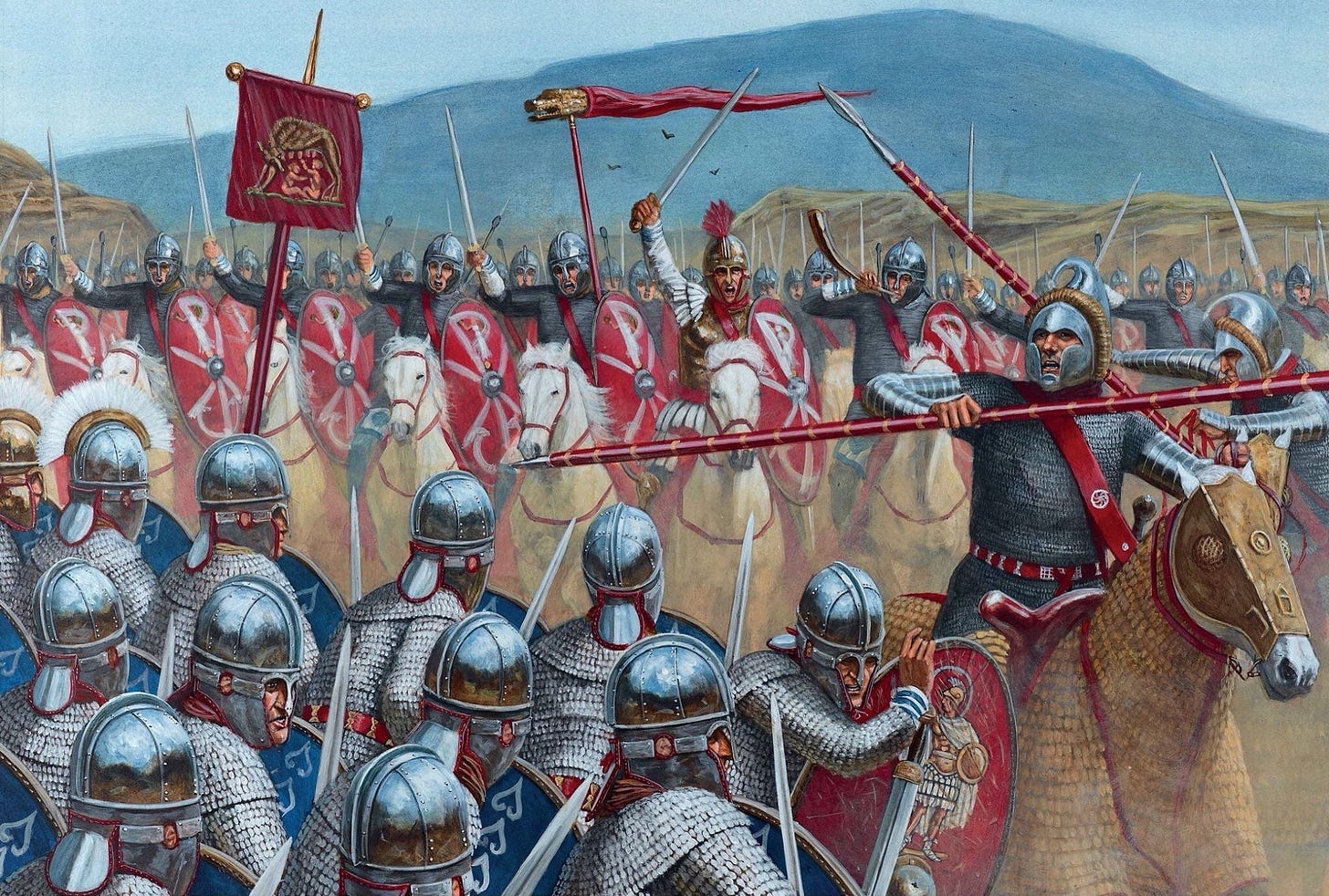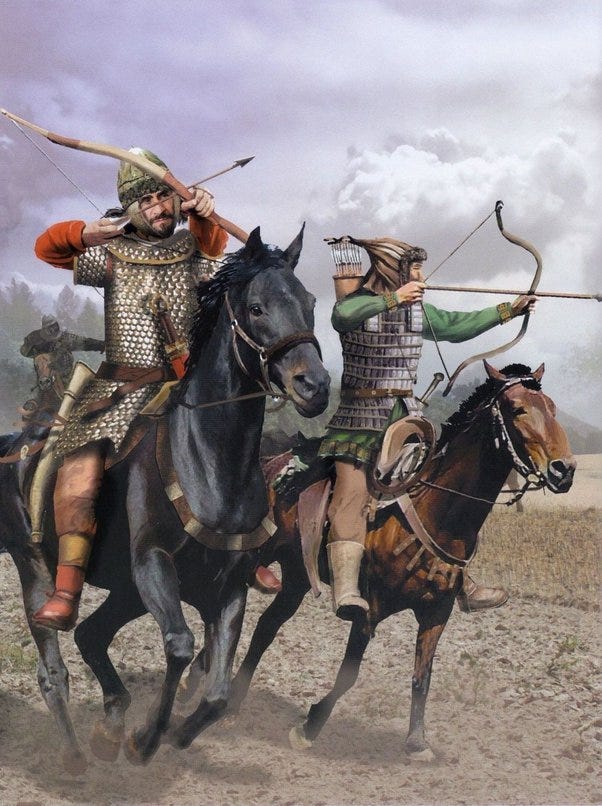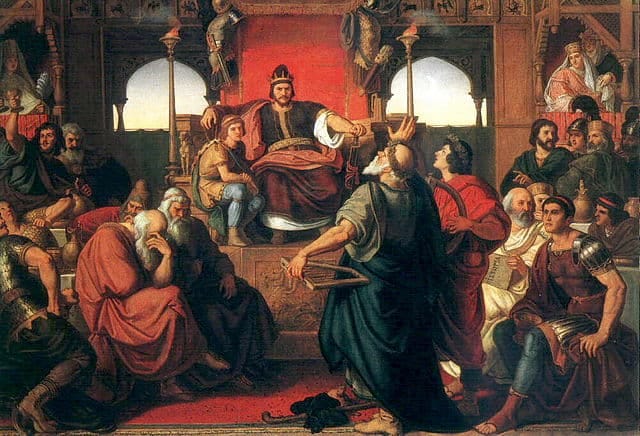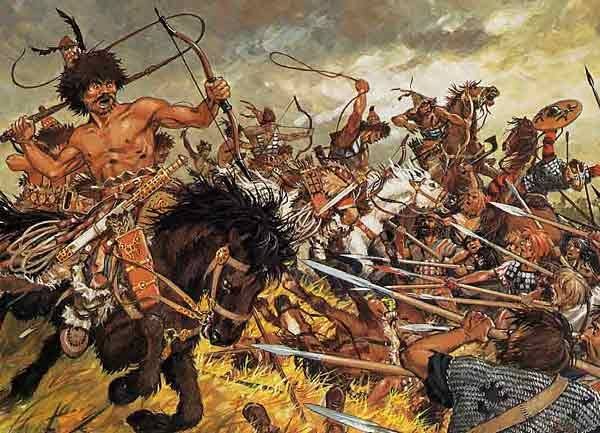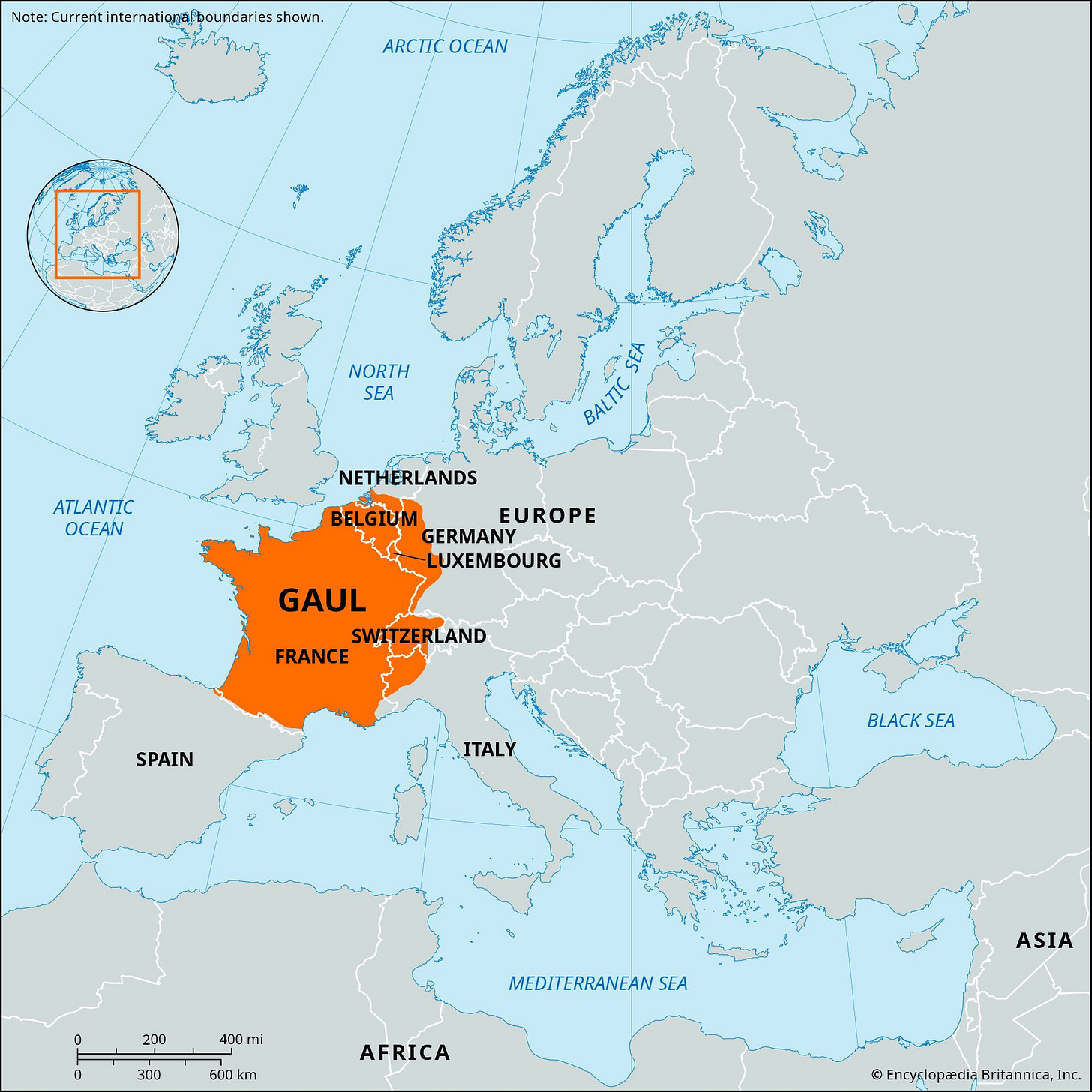Hello Dear Reader,
It is a pleasure to introduce to you one of the most well known names but least understood figures in history. He was a scourge of the Byzantines, Rome, and the European tribes in the East. He was an untamable raider that set the cities of Western Europe ablaze. He became so feared and so deadly that he became known as the “Scourge of God.” This man is Atilla the Hun. So come dear reader, take a seat around my fire and let’s begin. The hooves of their horses pound the dirt like rolling thunder and those in their path must flee.
A Continent in Chaos
Before we delve into Attila, his people, his empire, and his way of life, we must first (as always), set the stage. Europe, at the time of Attila, was a continent in chaos. Why you may ask? An excellent initial question dear reader. To put it simply, the Roman Empire was in the process of collapsing, leaving the continent, especially the Western portion of the continent vulnerable. To add context to my previous sentence, the Roman Empire had split into two. The Western portion (Imperial Rome) would fall and never recover, while the Eastern portion would flourish, at least for a time, and become the Byzantine Empire but not without struggle. I tell you this to provide context into future battles.
Let me now give you a full introduction to the Huns themselves. The Huns are thought to have originally come from Central Asia and the Caucasus while “settling” down in Eastern Europe. The reason I display the word “settling” in quotations is because the Huns did not really settle as they were a nomadic people. At the time our story takes place, they simply occupied an area that was rather large and demanded those that existed in that area to treat them as their conquerors.
However, even though they were nomadic, it would be wrong to assume they were not powerful and that they did not have an empire because they very much were powerful and did have an empire. Their empire was somewhat short-lived but it was vast. They would kick the Romans all over Europe and exact tribute from them and other tribes of Europe. The reason they could so handily defeat and subjugate those in such a short time was due to their mode of transportation and fighting style. Dear reader, please allow me to introduce the horse and the archer. Their use of small but fast horses on the battlefield helped to out maneuver many of their enemies in bafttle. They also introduced a composite recurve bow into the Eastern Roman Empire which they used to a devastating effect.
Now, I would personally classify the Hun as a horse archer and the horse archer as a weapon system. I believe the horse archer to be comparable to any other engine of war like the trebuchet. This is because there was nothing like it at the time. In fact, throughout history there would be nothing that could or would conquer horse archers until guns started to come about. Before I continue I must be vitally clear. Even though these Huns were Asiatic and in many respects, shared similarities (like their dependence on horses and archery) with the Mongols, they are NOT Mongols. The Mongol Empire is and was something entirely different but not to worry, we will be delving down that rabbit hole a different day.
Never Arbitrate
Now, let us turn to the main character in our story. Attila, born in 406 AD, inherited the mantle of leadership from his father Mundzuk, establishing himself as a fearsome warrior early on. Attila, alongside his brother Bleda, assumed the Hunnic throne in 434 AD. They had a peaceful, shared kingship that would prosper but not for long (as you may be able to tell, this is called foreshadowing).
However, I should note that the Hunnic Empire had began to grow before Attila had come to power as the Huns conquered the Alans in Eastern Europe after they crossed the Volga River in about 370 AD. Continuing their push Westward, they then attacked the Gothic Kingdom which was located between the Carpathian Mountains and the Danube River. Eventually, a large number of Goths, along with Vandals, Alans, Suebi, and Burgundians moved further West to escape the Huns. This would prove troubling for the Romans as it forced many hostile tribes onto Roman lands. It can be inferred at this may have precipitated the collapse of the Western Roman Empire.
At the time Attila became king alongside Bleda, they had negotiated a truce with the Eastern Roman Empire in which the Romans had agreed to pay them a large sum of gold (along with turning over some Hunnic political enemies) for them to stay out of Roman business and for the Huns to stay in the Great Hungarian Plain. This would actually turn out poorly for the Eastern Romans, Western Romans and all European tribes as it allowed the Huns to consolidate their power.
Undeterred by previous truces and emboldened by said consolidation of power, Attila decided to orchestrate simply audacious campaigns that would reverberate across Europe. It seems as if Attila had little patience for words on paper. Crossing the Danube, the Huns first devastated the cities in Illyricum and forts along the river, including Viminacium. When they reached Margus, it was not a fight but a Roman bishop's betrayal that facilitated the fall of the city to the Huns.
However, this was not all that was happening in Europe as the 5th Century would continue to prove to be rather fluid. While the Huns wreaked havoc along the Danube, the Vandals, led by Geiseric, seized the Western Roman province of Africa and its capital, Carthage. This strategic move significantly weakened the Western Roman Empire, disrupting the traditional flow of resources to Rome.
The Romans could not stand for this so they redirected some of their continental forces to Sicily for an expedition against the Vandals. This would prove to be a mistake as Attila saw an opportune moment to exploit the vulnerabilities in the Balkans. In 441, the Huns invaded the region, capturing Margus, Viminacium, Singidunum (Belgrade), and Sirmium. Theodosius, the Eastern Roman Emperor, recalled his troops from Sicily, anticipating the Huns' threat but underestimating their capabilities.
In 443, Attila unleashed yet another devastating campaign, introducing advanced siege tactics with battering rams and rolling siege towers. Things for the Romans had gone from bad to worse as the Huns had learned how to use additional tools of war. Ratiara and Naissus fell victim to the Huns' assault, with Priscus vividly describing the desolation: "When we arrived at Naissus, we found the city deserted, as though it had been sacked...the ground adjacent to the bank was full of the bones of men slain in war."
Advancing further, the Huns captured Serdica (Sofia), Philippopolis (Plovdiv), and Arcadiopolis (Lüleburgaz). A Roman army outside Constantinople was defeated, but the double walls of the Eastern capital thwarted Attila's progress. A second Roman army was then again defeated after this setback. The Magister Militum per Orientem Anatolius negotiated a peace settlement, although it imposed harsh terms on the Romans. The Eastern Empire agreed to pay a substantial indemnity, tripling the annual tribute, and increasing the ransom for Roman prisoners.
Dear readers, it seemed to the whole of Europe that these Huns were unstoppable. Little did they know how right they would be.
Conquer or Die
Following Bleda's death around 445, Attila assumed sole leadership of the Huns, consolidating his authority and embarking on a period marked by unparalleled dominance. Bleda’s death could probably be disputed but we will not be the ones to do so as we can most likely assume he was assassinated by Attila.
With his Kingship established, he once again invaded the Eastern Roman Empire but quickly turned his attention west to Gaul. Let me kindly remind you dear reader that Gaul, in this time period, can roughly be considered modern day France, the Lowlands Regions, as well as small parts of Germany and Switzerland.
He gathered his vassals of Ostrogoths, Lombards, Alans, Burgundians, and others and headed West to go raid the weakened state. The Huns would decide to sack, or at the very least threaten most of the cities in Gaul. Throughout the march, they would gather many rival tribesmen to their ranks, in the promise of loot and glory for themselves.
Eventually, the Romans, who recognized their own present weaknesses, and most likely tired of losing, decided to form an alliance with the Visigoths to attempt to protect Italy. General Flavius Aetius of the Roman Army and King Theodoric I of the Visigoths would decisively defeat Attila at the Battle of the Catalaunian Plains in 451 AD. This would be his only defeat and a major victory for the Romans, not just because they had defeated Attila’s cavalry on flat ground but also because Theodoric had also perished in the fighting.
Undeterred by his setback at the Battle of the Catalaunian Plains, Attila mustered his forces once more, launching a renewed assault on Italy in 452 AD with his sights set on Rome. However, the Italian landscape he encountered was far from the thriving region he might have anticipated. Italy had been grappling with a series of devastating famines in the preceding years, particularly in 451 and 452, resulting in meager resources for the Hunnic troops traversing the territory en route to Rome.
Adding to the challenges, a pervasive disease had taken hold within the camp of the Huns, impeding their advance and diminishing their strength. In this context, the conditions were far from favorable for Attila's renewed campaign. The scarcity of provisions, coupled with the debilitating effects of illness, significantly hampered their military endeavors as they navigated the mountainous Italian terrain.
Furthermore, Pope Leo the Great emerged as an rather interesting influential figure in obstructing Attila's ambitions to assert control over Italy. The Pope played a diplomatic and strategic role that cannot be understated, leveraging his influence to hinder the progress of the Hunnic forces in heated negotiation. His intervention would help end Attila’s renewed bid for dominance over Italy.
Following this, and to his credit, Attila would admit the weak position of his campaign and decide to cut his losses. He would retreat back to the plains and decide to leave Rome be.
There, Where I Have Passed
In 453 AD, Attila finally met his death and under exceedingly suspicious circumstances. There are some that say he died of consumption as the years of harsh drinking finally caught up with him, others say he was assassinated, there are still some that say his wife killed him. All we know is that he woke up in his wedding bed covered in blood. Whatever the true cause, Attila's death in 453 AD precipitated the disintegration of the Hunnic Empire.
The problem in governing an empire as a nomadic people is that you move but the cities you conquered do not. Since the Huns and their style of “Government” were that of a nomadic people, their conquests often involved raids, tributes, and negotiations rather than outright territorial annexations and a change of government systems. This is in stark contrast to the Romans who would bring law to many lawless places as well as establish colonies and help grow cities across the continent.
Internal power struggles and conflicts among Attila's successors also led to the fragmentation of the once-unified horde. Concurrently, the Western Roman Empire, already weakened, succumbed to further onslaughts by Germanic tribes, culminating in the traditional date of its fall in 476 AD.
Well dear reader, it seems our time has come to an end. Attila is dead, his cohorts ride off into the sunset, and Europe begins to breathe easy again (at least in the East). Thank you so much for joining me, I would like you to know how much I enjoyed our time together. Stay tuned for next time where we delve into one of the most legendary figures in history. One that would lead a transition that would shape the face of the Earth and all its history.





